
Brief Introduction:Located in the hinterland of the Tibetan Plateau, Sanjiangyuan region has an important strategic position in the national ecological civilization construction. To effectively promote the construction of a national park system, the National Development and Reform Commission and 13 other ministries and commissions jointly issued the Pilot plan for establishing national park system, and chose Qinghai Province to carry out the pilot program. On December 9, 2015, the General Secretary presided over the 19th meeting of the Central Leading Group for Comprehensively Deepening Reform, at which “The General Plan for Piloting China's Sanjiangyuan National Park System” was reviewed and approved. In March 2016, the State Office of the Office of the People's Republic of China issued a pilot plan, clarifying that Sanjiangyuan National Park consists of the Yellow River Source Park, the Yangtze River Source Park and the Lancang River Source Park, thus establishing the real beginning of the exploration of the national park system in China. In order to better support the construction of Sanjiangyuan National Park, with the support of the major science and technology project " Sanjiangyuan National Park Star-Space-Ground Integrated Ecological Monitoring and Data Platform Construction and Development and Application " in Qinghai Province, the Sanjiangyuan Star-Space-Ground Integrated Ecological Monitoring Data Platform was constructed to significantly improve the ecological monitoring coverage and multi-source heterogeneous data fusion capabilities of Sanjiangyuan National Park.
Publish Datetime:2022-12-13
Number of Datasets:53
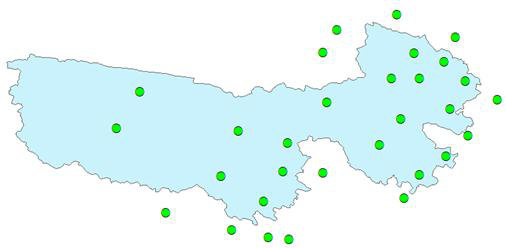
The files in this data set are named as: 1. Pressure of the station: SURF_CLI_CHN_MUL_DAY-PRS-10004-SITEID.TXT 2. Temperature: SURF_CLI_CHN_MUL_DAY-TEM-12001-SITEID.TXT 3. Relative humidity: SURF_CLI_CHN_MUL_DAY-RHU-13003-SITEID.TXT 4. Precipitation: SURF_CLI_CHN_MUL_DAY-PRE-13011-SITEID.TXT 5. Evaporation: SURF_CLI_CHN_MUL_DAY-EVP-13240-SITEID.TXT 6. Wind direction and wind speed: SURF_CLI_CHN_MUL_DAY-WIN-11002-SITEID.TXT 7. Sunshine: SURF_CLI_CHN_MUL_DAY-SSD-14032-SITEID.TXT 8.0cm Ground Temperature: SURF_CLI_CHN_MUL_DAY-GST-12030-0cm-SITEID.TXT Detailed format descriptions for each data file are given in the SURF_CLI_CHN_MUL_DAY_FORMAT.doc file. The meteorological site information contained in this data set is as follows: Site_id lat lon ELV name_En 52754 37.33 100.13 8301.50 Gangcha 52833 36.92 98.48 7950.00 Uran 52836 36.30 98.10 3191.10 Dulan 52856 36.27 100.62 2835.00 Chabcha 52866 36.72 101.75 2295.20 Xining 52868 36.03 101.43 2237.10 Guizhou 52908 35.22 93.08 4612.20 Wu Daoliang 52943 35.58 99.98 3323.20 Xinghai 52955 35.58 100.75 8120.00 Guinan 52974 35.52 102.02 2491.40 Tongren 56004 34.22 92.43 4533.10 Toto River 56018 32.90 95.30 4066.40 Zaduo 56021 34.13 95.78 4175.00 Qumalai 56029 33.02 97.02 3681.20 Yushu 56033 34.92 98.22 4272.30 Maddo 56034 33.80 97.13 4415.40 Qingshui River 56038 32.98 98 98.10 9200.00 Shiqu 56 043 34.47 100.25 3719.00 Golo 56 046 33.75 99.65 3967.50 Dari 56065 34.73 101.60 8500.00 Henan 56 067 33.43 101.48 3628.50 Jiuzhi 56074 34.00 102.08 3471.40 Marqu 56080 35.00 102.90 2910.00 Hezuo 56106 31.88 93.78 4022.80 Suoxian 56116 31.42 95.60 3873.10 Ding Qing 56125 32.20 96.48 3643.70 Xiangqian 56128. 31.22. 96.60. 3810.00 Leiwuqi 56 137 31.15 97.17 3306.00 Changdu 56151 32.93 100.75 8530.00 Banma 56152 32.28 100.33 8893.90 Saida
2022-09-13 View Details
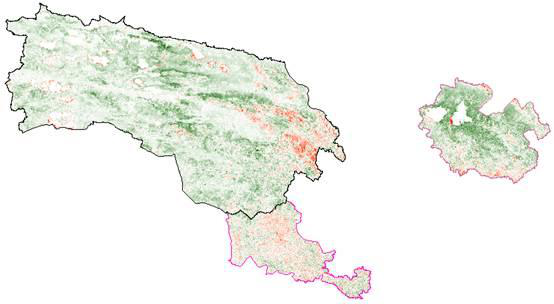
Based on the average NDVI (spatial resolution 250m) of MODIS during the growing season from 2000 to 2018, the trend of NDVI was calculated by using Mann-Kendall trend detection method. Three parks of Three River Source National Park are calculated (CJYQ: Yangtze River Park; HHYYQ: Yellow River Park; LCJYQ: Lancang River Park). CJYQ_NDVI_trend_2000_2018_ok.tif: Changjiang Source Park NDVI trend. CJYQ_NDVI_trend_2000_2018_ok_significant.tif: Changjiang Source Park NDVI change trend, excluding the area that is not significant (p > 0.05). CJYYQ_gs_avg_NDVI_2000.tif: The average NDVI of the Yangtze River Source Park in 2000 growing season. Unit NDVI changes every year.
2021-11-02 View Details
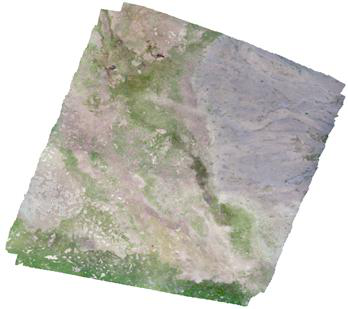
On August 19, 2018, DJI UAV was used to aerial photograph the wetland sample in Qumalai County of the Yangtze River Source Park. The overlap degree of adjacent photographs was not less than 70% according to the set flight route. The Orthophoto Image and DSM were generated using the photographs taken. The Orthophoto Image included three bands of red, green and blue, with a ground resolution of 2 cm, an area of 850 m x 1000 m and a resolution of 4.5 cm for DSM.
2021-11-02 View Details
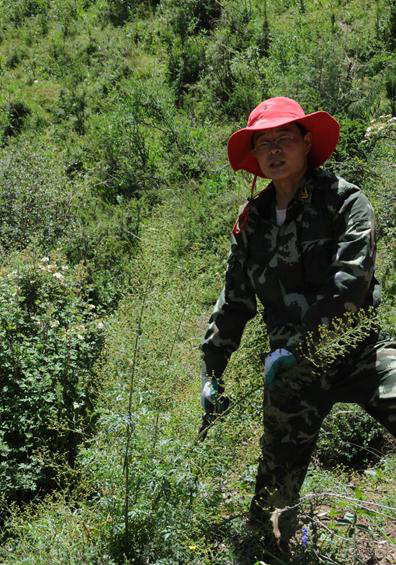
This data set is the plant collection and distribution site information of Three-River-Source National Park investigated by Northwest Plateau Biology Institute of Chinese Academy of Sciences. The data set covers the period from 2008 to 2017, and the survey covers theThree-River-Source National Park. The survey contents include information such as collection date, number, family, genus, species, survey date, collection place, collector, longitude, latitude, altitude, habitat, appraiser, etc. Three parks of the national park were investigated respectively. 88 species of vegetation belonging to 56 genera and 24 families were investigated in the Yangtze River Source Park, with 116 records in total. Vegetation of 110 species in 64 genera and 26 families was investigated in the Yellow River Source Park, with 159 records in total. The vegetation of 30 species in 22 genera and 12 families was investigated in Lancang River Source Park, with a total of 33 records.
2021-10-13 View Details

The multi-decadal lake number and area changes in China during 1960s–2020 are derived from historical topographic maps and >42151 Landsat satellite images, including lakes as fine as ≥1 km^2 in size for the past 60 years (1960s, 1970s, 1990, 1995, 2000, 2005, 2010, 2015, 2020). From the 1960s to 2020, the total number of lakes (≥ 1 km ^ 2) in China increased from 2127 to 2621, and the area expanded from 68537 km ^ 2 to 82302 km ^ 2.
2021-08-09 View Details
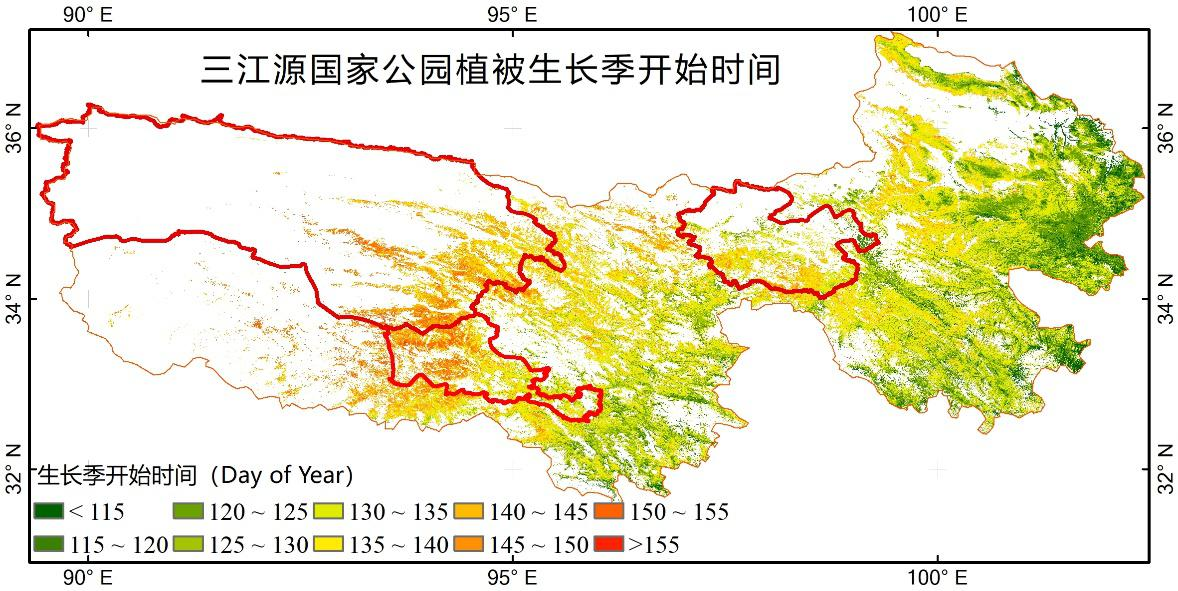
This dataset is land surface phenology estimated from 16 days composite MODIS NDVI product (MOD13Q1 collection6) in the Three-River-Source National Park from 2001 to 2020. The spatial resolution is 250m. The variables include Start of Season (SOS) and End of Season (EOS). Two phenology estimating methods were used to MOD13Q1, polynomial fitting based threshold method and double logistic function based inflection method. There are 4 folders in the dataset. CJYYQ_phen is data folder for source region of the Yangtze River in the national park. HHYYQ_phen is data folder for source region of Yellow River in the national park. LCJYYQ_phen is data folder for source region of Lancang River in the national park. SJY_phen is data folder for the whole Three-River-Source region. Data format is geotif. Arcmap or Python+GDAL are recommended to open and process the data.
2021-08-05 View Details
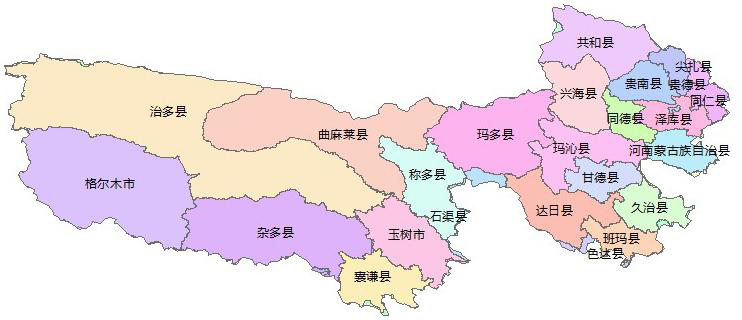
This data is derived from the National Basic Geographic Information Resources Catalogue Service System, which provides 11 million national basic geographic databases free of charge by the National Basic Geographic Information Center in November 2017. We have spliced and cut the source of the three rivers as a whole, so as to facilitate the use of the study of the source area of the three rivers. This data set is composed of 1:1 million administrative boundary layers (BOUA) and administrative boundary line layers (BOUL) in Sanjiangyuan area. Names and definitions of BOUA attribute items: Attribute Item Description Fill in Example PAC Administrative Division Code 513230 NAME Name Rangtang County Names and definitions of BOUL attribute items: Attribute Item Description Fill in Example GB National Standard Classification Code 630200 The meaning of BOUL attribute items: Attribute Item Code Description GB 630200 Provincial Boundary GB 640200 District, Municipal and State Administrative Region GB 650201 County administrative boundaries (determined)
2021-07-29 View Details
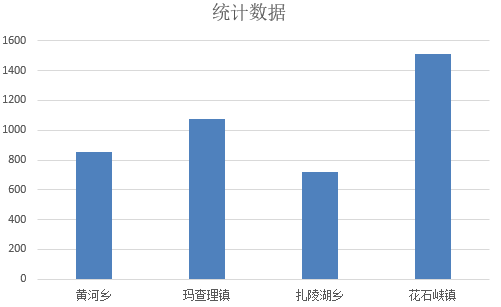
This data set contains statistical tables on the community situation of each county in Three-River-Source National Park. The specific contents include: Table 1 includes: number of administrative villages, number of natural villages, number of households, population, number of rural labor force, total value of primary and secondary industries, net income per capita, and number of livestock. Table 2 includes: the ethnic composition of the population (population of each ethnic group), education-related statistics (number of primary and secondary schools and number of students), health-related statistics (number of hospitals, health rooms and medical personnel), and statistics on the education level of the population (number of people with different education levels); Table 3 includes: the grassland (total grassland area, usable grassland area, moderately degraded area and grassland vegetation coverage), woodland (total area, arbor forest area, shrub forest area and sparse forest area), water area (total area, river area, lake area, glacier area, snowy mountain area and wetland area). A total of four counties were designed: Maduo, Qumalai, Zaduo and Zhiduo. This data comes from statistics of government departments.
2021-04-20 View Details
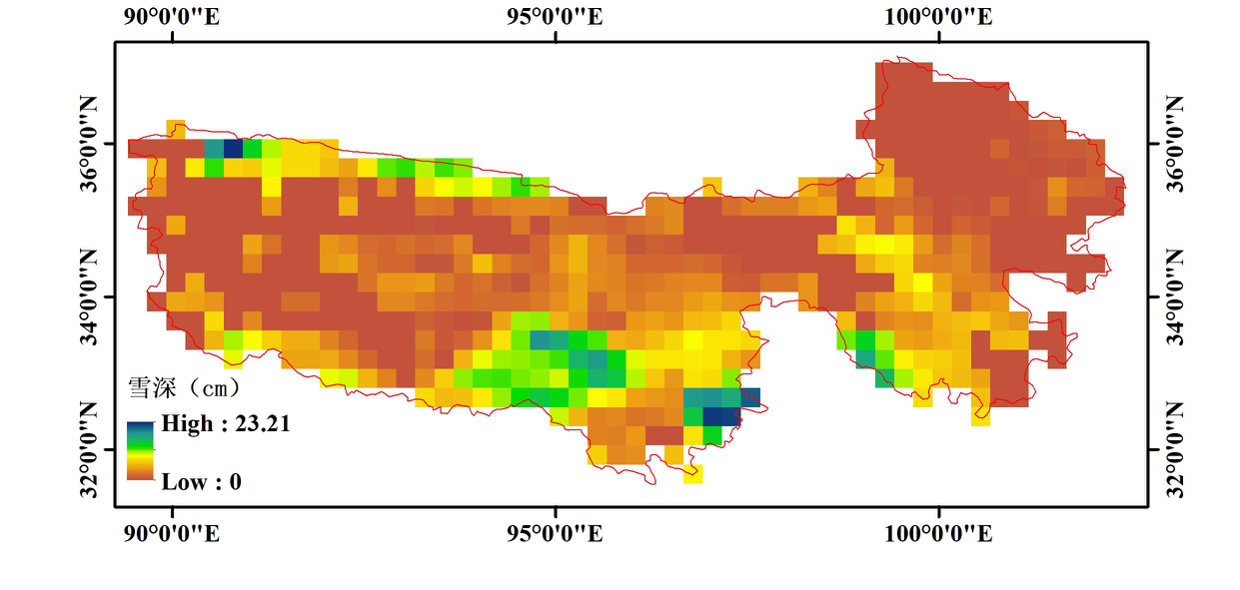
This dataset was derived from long-term daily snow depth in China based on the boundary of the three-river-source area. The snow depth ranges from 0 to 100 cm, and the temporal coverage is from January 1 1980 to December 31 2020. The spatial and temporal resolutions are 0.25o and daily, respectively. Snow depth was produced from satellite passive microwave remote sensing data which came from three different sensors that are SMMR, SSM/I and SSMI/S. Considering the systematic bias among these sensors, the inter-sensor calibrations were performed to obtain temporal consistent passive microwave remote sensing data. And the long-term daily snow depth in China were produced from this consistent data based on the spectral gradient method.For header file information, refer to the data set header.txt.
2021-04-20 View Details

The dataset was produced based on MODIS data. Parameters and algorithm were revised to be suitable for the land cover type in the Three-River-Source Regions. By using the Markov de-cloud algorithm, SSM/I snow water equivalent data was fused to the result. Finally, high accuracy daily de-cloud snow cover data was produced. The data value is 0(no snow) or 1(snow). The spatial resolution is 500m, the time period is from 2000-2-24 to 2019-12-31. Data format is geotiff, Arcmap or python+GDAL were recommended to open and process the data.
2021-04-20 View Details

The Three-River-Source National Park with an area of 123,100 km2 and include three sub regions, they are source region of the Yangtze River in the national park, source region of Yellow River in the national park and source region of Lancang River in the national park. The national park is located between longitude 89°50'57" -- 99°14'57", latitude 32°22'36" -- 36°47'53". It accounts for 31.16% of the total area of Three-River-Source region. This data set is generated by digitizing the location map of Three-River-Source national park in the comprehensive planning of Three-River-Source national park. The data include the boundary for the national park. Data format is Shapefile. Arcmap is recommended to open the data.
2021-04-20 View Details

This data comes from the National Catalogue Service for Geographic Information, which was provided to the public free of charge by the National Basic Geographic Information Center in November 2017. We spliced and trimmed Three Rivers Source Region as a whole to facilitate its use in the study of Three Rivers Source Region. The current status of the data is 2015. This dataset is the Three Rivers Source Region 1: 250,000 water system data, including three layers of water system surface (HYDA), water system line (HYDL) and water system point (HYDP). The water system surface (HYDA) includes lakes, reservoirs, double-line rivers, and ditches; the water system line (HYDL) includes single-line rivers, ditches, and river structure lines; and the water system points (HYDP) include springs and wells. HYDA attribute item name and definition: Attribute item Description Sample GB National standard classification code 210101 HYDC Water system name code KJ2103 NAME Name Heihe WQL Water quality Fresh PERIOD Seasonal months 7-9 TYPE Type Pass HYDL attribute item name and definition: Attribute item Description Sample GB National standard classification code 210101 HYDC Water system name code KJ2103 NAME Name Heihe PERIOD Seasonal months 7-9 HYDP attribute item name and definition: Attribute item Description Sample GB National standard classification code 210101 NAME Name Unfreezing spring TYPE Type Fresh ANGLE Angle 75 Water system GB code and its meaning: Attribute item Code Description GB 210101 Ground river 210200 Seasonal river 210300 Dry up river 230101 Lake 230102 Pond 230200 Seasonal lake 230300 Dry lake 240101 Built reservoir 240102 Reservoir in building
2021-04-20 View Details
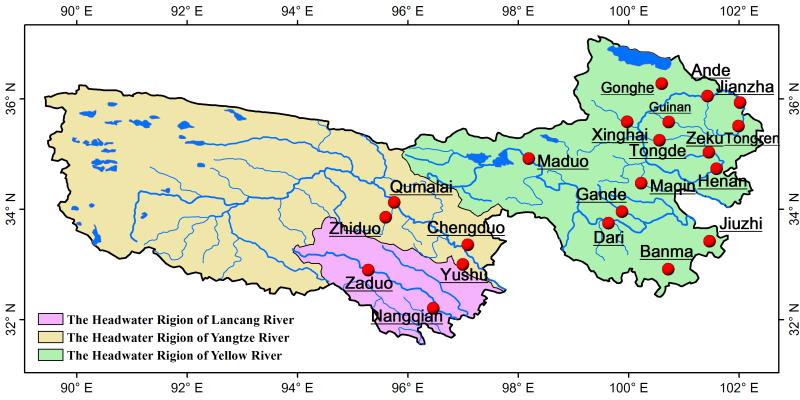
The data set contains the boundaries of the three source regions of the Yellow River, the Yangtze River and the Lancang River, the boundary of the whole Sanjiangyuan region and the boundaries of the counties within the basin. The observation projects include the boundaries of the three source regions of the Yellow River, the Yangtze River and the Lancang River, the boundary of the whole Sanjiangyuan region and the boundaries of the counties within the basin.
2021-04-20 View Details

The data set is NDVI data of long time series acquired by SeaWiFS. The time range of the data set is from September 1997 to 2007. In order to remove the noise in NDVI data, the maximum synthesis is carried out. A NDVI image is synthesized every 15 days. The data set is cut out from the global data set, so as to carry out the research and analysis of the source areas of the three rivers separately. The data format of this data set is geotiff, spatial resolution is 4 km, temporal resolution is 15 days, time range: 256 days in 1997 to 365 days in 2007.
2021-04-20 View Details
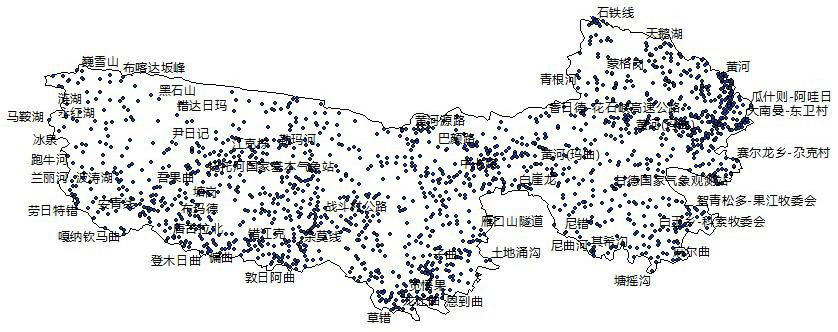
This data comes from the National Geographic Information Resources Catalogue Service System, which was provided free to the public by the National Basic Geographic Information Center in November 2017. We have spliced and cut the source of the three rivers as a whole, so as to facilitate the use of the study of the source area of the three rivers. The data trend is 2017. This data set is composed of 1:1 million natural place names (AANP) in Sanjiangyuan area, including traffic element names, memorial sites and historic sites, mountain names, river system names, marine geographical names, natural geographical names, etc. Natural Place Name Data (AANP) Attribute Item Names and Definitions: Attribute Item Description Fill in Example CLASS Toponymic Classification Code NAME in Chinese words PINYIN in Chinese Pinyin
2021-04-19 View Details

Monthly meteorological data of Sanjiangyuan includes 32 national standard meteorological stations. There are 26 variables: average local pressure, extreme maximum local pressure, date of extreme maximum local pressure, extreme minimum local pressure, date of extreme minimum local pressure, average temperature, extreme maximum temperature, date of extreme maximum temperature, extreme minimum temperature and date of extreme minimum temperature, average temperature anomaly, average maximum temperature, average minimum temperature, sunshine hours, percentage of sunshine, average relative humidity, minimum relative humidity, date of occurrence of minimum relative humidity, precipitation, days of daily precipitation >=0.1mm, maximum daily precipitation, date of maximum daily precipitation, percentage of precipitation anomaly, average wind speed, maximum wind speed, date of maximum wind speed, maximum wind speed, wind direction of maximum wind speed, wind direction of maximum wind speed and occurrence date of maximum wind speed. The data format is txt, named by the site ID, and each file has 26 columns. The names and units of each column are explained in the SURF_CLI_CHN_MUL_MON_readme.txt file. site_id lat lon elv name_cn 52754 37.33 100.13 8301.50 Gangcha 52833 36.92 98.48 7950.00 Wulan 52836 36.30 98.10 3191.10 Dulan 52856 36.27 100.62 2835.00 Qiapuqia 52866 36.72 101.75 2295.20 Xining 52868 36.03 101.43 2237.10 Guizhou 52908 35.22 93.08 4612.20 Wudaoliang 52943 35.58 99.98 3323.20 Xinghai 52955 35.58 100.75 8120.00 Guinan 52974 35.52 102.02 2491.40 Tongren 56004 34.22 92.43 4533.10 Togton He 56018 32.90 95.30 4066.40 Zaduo 56021 34.13 95.78 4175.00 Qumalai 56029 33.02 97.02 3681.20 Yushu 56033 34.92 98.22 4272.30 Maduo 56034 33.80 97.13 4415.40 Qingshui River 56038 32.98 98.10 9200.00 Shiqu 56043 34.47 100.25 3719.00 Guoluo 56046 33.75 99.65 3967.50 Dari 56065 34.73 101.60 8500.00 Henan 56067 33.43 101.48 3628.50 Jiuzhi 56074 34.00 102.08 3471.40 Maqu 56080 35.00 102.90 2910.00 Hezuo 56106 31.88 93.78 4022.80 Suo County 56116 31.42 95.60 3873.10 Dingqing 56125 32.20 96.48 3643.70 Nangqian 56128 31.22 96.60 3810.00 Leiwuqi 56137 31.15 97.17 3306.00 Changdu 56151 32.93 100.75 8530.00 Banma 56152 32.28 100.33 8893.90 Seda
2021-04-19 View Details
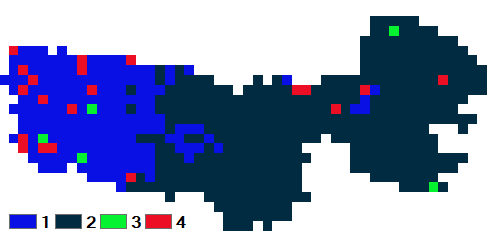
This data set uses SMMR (1979-1987), SSM / I (1987-2009) and ssmis (2009-2015) daily brightness temperature data, which is generated by double index (TB V, SG) freeze-thaw discrimination algorithm. The classification results include four types: frozen surface, melted surface, desert and water body. The data covers the source area of three rivers, with a spatial resolution of 25.067525 km. It is stored in geotif format in the form of ease grid projection. Pixel values represent the state of freezing and thawing: 1 for freezing, 2 for thawing, 3 for deserts, 4 for water bodies. Because all TIF files in the dataset describe the scope of Sanjiangyuan National Park, the row and column number information of these files is unchanged, and the excerpt is as follows (where the unit of cellsize is m): ncols 52 nrows 28 cellsize 25067.525 nodata_value 0
2021-04-19 View Details

The data set contains the rare animal survey data for the Sanjiangyuan area from 2016 to 2017, including the latitude and longitude of the survey site, the length of the sample line, animal discovery time, animal names, quantity, location of the occurrence, type of habitat, affiliated families, etc.
2021-04-18 View Details

The data set includes the sample survey data of alpine grassland and alpine meadow in Maduo County in September 2016. The sample size is 50cm × 50cm. The investigation contents include coverage, species name, vegetation height, biomass (dry weight and fresh weight), longitude and latitude coordinates, slope, aspect, slope position, soil type, vegetation type, surface characteristics (litter, gravel, wind erosion, water erosion, saline alkali spot, etc.), utilization mode, utilization intensity, etc.
2021-04-18 View Details
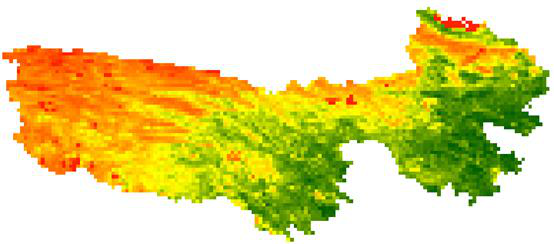
The data set is extracted from the NDVI data of long time series acquired by VEGETATION sensor on SPOT satellite. The time range of the data set is from May 1998 to 2013. In order to remove the noise in NDVI data, the maximum synthesis is carried out. A NDVI image is synthesized every 10 days. The data set is cut out from the global data set, so as to carry out the research and analysis of the source areas of the three rivers separately. The data format of this data set is geotiff, spatial resolution is 1 km, temporal resolution is 10 days, time range: May 1998 to December 2013.
2021-03-28 View Details
Contact Support
Links
National Tibetan Plateau Data CenterFollow Us

A Big Earth Data Platform for Three Poles © 2018-2020 No.05000491 | All Rights Reserved
|  No.11010502040845
No.11010502040845
Tech Support: westdc.cn